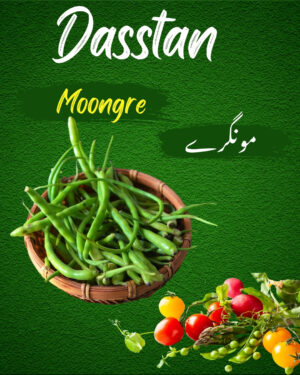Description
Coriander (Sabz Dhaniya): The Zesty Herb That Elevates Every Dish
Coriander, also known as cilantro in some parts of the world, is more than just a garnish; it’s a vibrant herb that adds a burst of fresh, citrusy flavor to cuisines worldwide. From the delicate leaves to the aromatic seeds, every part of this versatile plant offers a unique culinary experience. Whether you’re whipping up a zesty salsa, a fragrant curry, or a refreshing salad, coriander is the secret ingredient that can truly elevate your dishes.
A Flavor Explosion:
Coriander’s bright green leaves boast a distinctive, slightly tangy flavor with hints of citrus and parsley. Some describe it as cool and refreshing, while others detect a subtle peppery note. This complex flavor profile makes it a perfect complement to a wide range of dishes, from Mexican and Indian to Southeast Asian and Middle Eastern. It’s often used fresh, chopped and sprinkled over finished dishes to add a final flourish of flavor and visual appeal.
Beyond the Leaves: Coriander Seeds
While the leaves are the most commonly used part of the plant, the seeds, known as coriander seeds, are a spice in their own right. These small, round seeds have a warm, nutty, and slightly citrusy aroma when roasted and ground. They are a staple in spice blends like garam masala and are used to add depth and warmth to curries, stews, and rubs. They also possess potential health benefits, traditionally used to aid digestion.
Culinary Uses: A Global Staple
Coriander’s versatility shines through in its diverse culinary applications:
- Fresh: Chopped coriander leaves are used as a garnish for soups, salads, tacos, and countless other dishes. They are also a key ingredient in salsas, chutneys, and pesto.
- Cooked: Coriander leaves can be added to stir-fries, curries, and stews for a burst of fresh flavor.
- Spice: Coriander seeds are used whole or ground in spice blends and are essential for flavoring curries, stews, and roasted vegetables.
Health Benefits (and a note of caution):
Coriander has been used in traditional medicine for centuries and is believed to offer several health benefits. Some studies suggest it may have antioxidant, anti-inflammatory, and cholesterol-lowering properties. However, it’s important to note that more research is needed to confirm these claims. It is always advisable to consult a healthcare professional before using coriander for medicinal purposes.
Growing Coriander:
Coriander is relatively easy to grow at home, either in pots or in the garden. It prefers sunny locations and well-drained soil. However, it has a tendency to bolt (go to seed) quickly in hot weather, so successive plantings are recommended for a continuous supply of fresh leaves.
Find Your Fresh Coriander:
Whether you’re looking for fresh coriander leaves to garnish your next meal or coriander seeds to add depth to your spice rack, you can find it at your local grocery store or farmers market. Look for vibrant green leaves and fragrant seeds for the best flavor.








Reviews
There are no reviews yet.